
One of the most incredible things about Aikido is the power of its community. During the pandemic I witnessed this many times, people getting together to keep raising funds for dojos, international online seminars, discussion groups, in short, countless actions in favor of the collective that Aikido represents.
This interview with Horii sensei is a beautiful example of this. Who helped me to get in touch with Horii sensei was my colleague at the Hombu Dojo, and who is now in the USA, Kazuhito Ozu. Then, through Horii sensei’s generosity and patience, the interview was conducted in English, which is neither my native nor his native language. To review everything, I asked for the help of my dear friend Shuya Kanno, also a practitioner of the Hombu Dojo but who now has a dojo in Bali, Indonesia, to translate into Japanese. In addition, a Horii sensei student, Myrine Maekawa, revised and made the necessary corrections in the Portuguese translation.
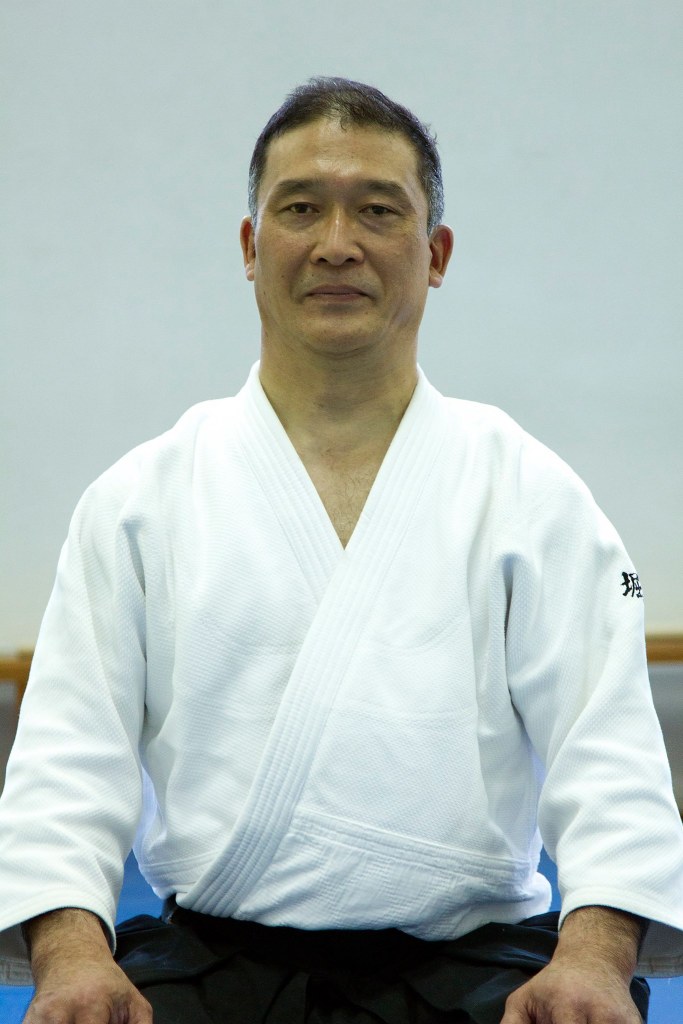
Etsuji Horii sensei is today one of the main masters of Aikido. He was an uchi deshi and instructor at Hombu Dojo for ten years, being a major Uke for Doshu Kisshomaru Ueshiba and the current Doshu Moriteru Ueshiba. In 1997 he opened Dojo himself, which today is one of the main training centers in the world, the Aikido Kobe Sanda Dojo.
He granted this interview for the blog is already a huge honor, which was added with the joy of seeing how many people are willing to help expand and promote our art, Aikido. Even though it is little, I do not know any better way to express my gratitude to everyone who helped, especially Horii sensei, saying my most sincere, thank you!
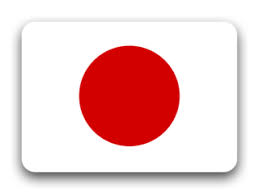
合気道の最も素晴らしい点の1つは、合気道で繋がっていくコミュニティー力です。私自身、今回のパンデミック期間中にこれを何度も見てきました。合気道を愛する会員の皆さんが一同となって、道場の継続のために資金集めを呼びかけたり、オンラインを通じて国際合気道セミナーの開催やディスカッショングループを形成するなど、合気道に関連して多くのアクティビティーが実施されました。
今回の堀井先生へのインタビューはまさにその素晴らしい例のひとつであります。実現に向けて、堀井先生と連絡を取らせて頂くために、仲介を引き受けて頂いた本部道場の同志にて、現在はアメリカにおられる大頭一仁さんです。そして今回のインタビューは、堀井先生の寛大さと忍耐力のお蔭にて、私の母国語でもなく、また堀井先生の母国語でもない英語にて行いました。よってその信憑性を確認するために、私は昔からの親友である菅野修也さんに日本語の翻訳をお願いしました。菅野さんは本部道場で稽古をされていて、現在インドネシアのバリ島にて合気道を教えています。さらに、堀井先生の生徒さんである前川ミリーネさんがポルトガル語の翻訳のチェックと必要個所の修正をして頂きました。
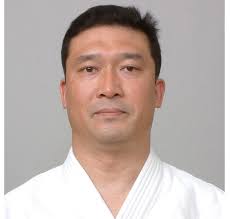
堀井悦二先生は今日、世界を代表する合気道指導者のお一人です。先生は10年間本部道場で内弟子兼指導員を務め、二代目道主植芝吉祥丸先生と現在の道主植芝守央先生の演武の受けも務めました。 1997年には堀井先生ご自身の道場を開きました。合気道神戸三田道場という名前にて、世界の合気道家達がぜひ訪れたい主要な道場のひとつとなっております。
最後となりますが、堀井先生がこのブログのためにインタビューを受け入れてくださった事、大変光栄に思っております。そしてまた多くの方々が合気道を普及、促進するためにお互い協力し合う姿に喜びを感じます。言葉少なからず申し訳ありませんが、これまでご協力頂いた皆様への感謝の気持ちと共に、特に堀井先生、心より御礼申し上げます。
“ありがとうございました。”

Uma das coisas mais incríveis do Aikido é o poder de sua comunidade. Durante a pandemia testemunhei inúmeras vezes isso, pessoas se juntando para manter arrecadar fundos para dojos, seminários internacionais on line, grupos de discussão, enfim, inúmeras ações em prol do coletivo que o Aikido representa.
Essa entrevista com Horii sensei é um belo exemplo disso. Quem me ajudou a entrar em contato com o Horii sensei foi meu colega de prática no Hombu Dojo, e que hoje está nos EUA, Kazuhito Ozu. Depois, através da generosidade e paciência do Horii sensei, a entrevista foi feita em inglês, que não é a língua nativa nem minha e nem a dele. Para revisar tudo, pedi a ajuda do meu amigo Shuya Kanno, também praticante do Hombu Dojo mas que hoje tem um dojo em Bali, Indonésia, para traduzir para o Japonês. Além disso, uma aluna do Horii sensei, Myrine Maekawa, revisou e fez as devidas correções na tradução para o português.

Etsuji Horii sensei é hoje um dos principais mestres da atualidade. Ele foi um uchi deshi e instrutor do Hombu Dojo por dez anos, sendo um dos principais Ukes para o Doshu Kisshomaru Ueshiba e para o atual Doshu Moriteru Ueshiba. Em 1997 ele abriu seu próprio Dojo, que hoje é um dos principais centros de treinamento do mundo, o Aikido Kobe Sanda Dojo.
Ele ter concedido essa entrevista para o blog já é uma honra enorme, que foi somado com a alegria de ver quantas pessoas estão dispostas a ajudar a expandir e divulgar nossa arte, o Aikido. Mesmo sendo pouco, não conheço outra forma melhor de expressar minha gratidão a todos que ajudaram, em especial ao Horii sensei, dizendo meu mais sincero, “muito obrigado!”
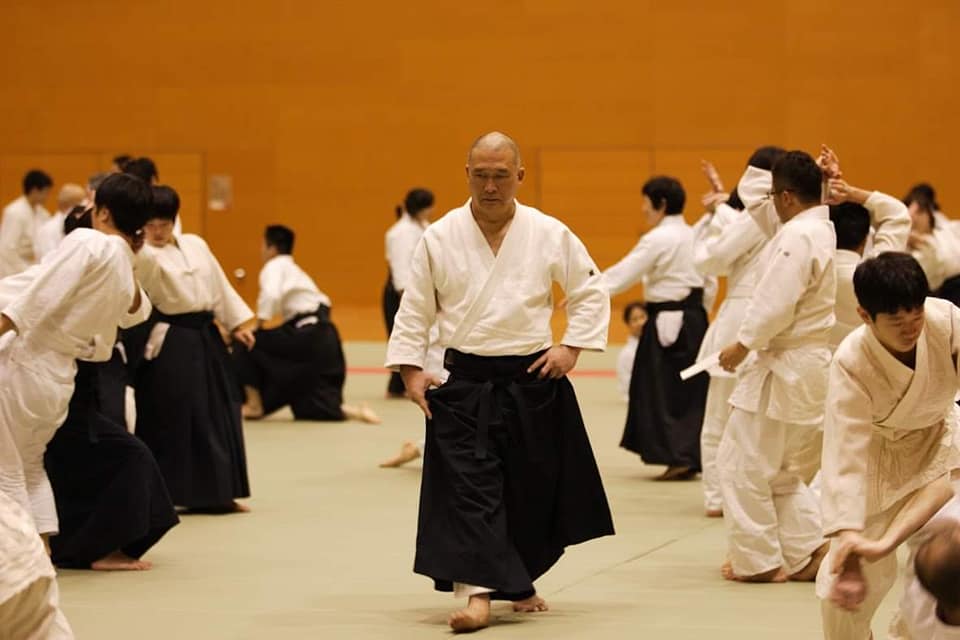
Etsuji Horii sensei interview
1) How was your childhood? Since you were kid, have you been involved in physical activities and martial arts?
I started Kendo when I was 8-12 years old.
1) 子供の頃はどのように過ごされていましたか?スポーツや武道にすでに取り組んでおられましたか?
私は8歳から12歳まで剣道を習っていました。
1) Como foi sua infância? Desde criança você se envolveu com atividades físicas e artes marciais?
Comecei o Kendo quando tinha 8-12 anos.
2) And when and how did you get to know Aikido?
When I was in the second year of junior high school, the Aikido club was founded in my junior high school. Then I started Aikido.
2)それではいつ、またどのようにして合気道に出会いましたか?
中学二年生の事、私の学校で合気道部が設立されて、そこで合気道を知り、始めました。
2) E quando e como você conheceu o Aikido?
Quando eu estava no segundo ano do ensino médio, o clube de Aikido foi fundado em meu colégio. Então comecei o Aikido.
3) Who was the instructor at the Aikido Club? Do you remember how many classes you took a week at that time?
My school teacher, Shimamoto sensei. He has Aikido dojo, too. I practice 3 times a week at that time. (At junior high)
3)その当時の合気道部の先生はどなたでしたでしょうか?またその頃はどれ位のペースにて、稽古されていましたか?
合気道部の顧問は、嶋本先生でした。先生はご自分で合気道道場も持たれていました。私は学校の合気道部で週3回は稽古していました。
3) Quem era o instrutor do Clube de Aikido? Você se lembra de quantas aulas você fazia por semana naquela época?
Meu professor era o Shimamoto sensei. Ele tem dojo de Aikido também. Eu praticava 3 vezes por semana nessa época, no ensino médio.
4) When did you realize that you wanted to live on Aikido, to be a professional?
When I was in college.
4)将来、合気道を職業にされたいと思いになったのはいつ頃でしょうか?
大学生の時です。
4) Quando você percebeu que queria viver de Aikido, ser um profissional?
Quando eu estava na faculdade.
5) And what was it like talking to your family about this decision, did everyone support it?
Haha. I majored in mechanical engineering. So my parents want to me a engineer.
5)そのご決断をされた時、先生のご家族はどのような反応でしたでしょうか?賛成されていましたか?
はは。私は機械工学を専攻していたので、私の両親は私が将来エンジニアになる事を期待していたと思います。
5) E como foi conversar com sua família sobre essa decisão, todos apoiaram?
(risos) Eu me formei em engenharia mecânica. Então meus pais queriam que eu fosse um engenheiro.
6) The story of Chiba sensei is famous, who spent days waiting in front of the Hombu Dojo before being accepted as an uchi deshi. How was the whole process for you to be accepted as an uchi deshi at Hombu Dojo? (how was the protocol to be accepted as an uchi deshi from Hombu Dojo and how was it for you?)
My time, I entered Hombu Uchideshi by a letter of introduction, not to wait at a front door. Haha.
Shimamoto sensei was a students of Kisaburo Osawa sensei (senior Osawa sensei). And Osawa sensei was Hombu Dojo-Cho at that time. So Shimamoto sensei introduced me to Osawa sensei. I entered to be Uchideshi when I graduated college, I was 20 years old. My hometown is Osaka. Then moved to Tokyo. It was great time and so exciting. I was young, everything is interesting for me.
6)千葉先生が、本部道場の内弟子として認められるために、道場の前にてずっと外で待っていたという話はとても有名ですが、先生はどのようなプロセスを経て、内弟子となられたのでしょうか?またどのような条件が課せられたのでしょうか?
私の時は、千葉先生の時とは違って(笑)、推薦状さえあれば、本部道場の内弟子として認めて頂けました。
嶋本先生は当時、今の本部道場の大澤勇人先生のお父様であった大澤喜三郎先生の生徒であり、当時大澤喜三郎先生は本部道場長というお立場でした。嶋本先生から大澤先生へ紹介して頂き、20歳で大学を卒業し、そのまま本部道場の内弟子として入門しました。私は大阪出身で、東京へ行く事に若かった事もあり、とても興奮していたことを思い出します。
6) A história de Chiba Sensei é famosa, no qual passou dias esperando em frente ao Hombu Dojo para ser aceito como uchi deshi. Como foi todo o processo para você ser aceito como uchi deshi no Hombu Dojo?
Na minha época, entrei no Hombu para ser um Uchideshi com uma carta de apresentação, não fiquei esperando na porta da frente (risos). Shimamoto sensei foi aluno de Kisaburo Osawa sensei (pai de Hayato Osawa sensei). E Osawa sensei era o Hombu Dojo-Cho naquela época. Então Shimamoto sensei me apresentou a Osawa sensei. Entrei para ser Uchideshi quando me formei na faculdade, tinha 20 anos. Minha cidade natal é Osaka. Então, mudei-me para Tóquio. Foi um momento incrível e muito emocionante. Eu era jovem, tudo me interessava.

Crouched: Yahe Solomon sensei, Takeshi Kanazawa sensei, Tamayuki Shimamoto sensei
7) The Hombu Dojo is huge compared to local dojos, with many masters providing training and a high level among practitioners. How challenging was the beginning there?
I restarted everything. Everything looks fresh. Fun and tough.
Fun: Being able to practice Aikido professionally. Learn how many teachers think about Aikido. Eat well, sleep well, practice well.
Tough: Get tired because a lot of practice time, and have to concentrate mind. Be careful to accompany Sensei. No holidays. Haha
7)本部道場は、当然他の道場とは異なり、世界の中心の道場であり、そこにおられる指導者の方々から高いレベルのご指導を頂けるだけに、はじめはとても大変な事も多かったと思いますが、いかがでしょうか?
私は全てを一から始めました。全てが新鮮に見えて、楽しい事もあれば、厳しい事もありました。
楽しい事は、専門的に合気道を稽古できるところです。多くの先生方の合気道に対する様々な考えを学びました。そして良く食べて、よく寝て、よく稽古しました。
厳しい事は、たくさん稽古した後はとても疲れましたし、集中力が必要です。先生のお供をさせて頂く際には、とても気をつかいました。それと休暇が無かった事です(笑)。
7) O Hombu Dojo é enorme comparado aos dojos locais, com muitos mestres fornecendo treinamento e um alto nível entre os praticantes. Quão desafiador foi o começo lá?
Eu reiniciei tudo. Tudo parecia novo. Era ao mesmo tempo divertido e difícil.
Divertido por ser capaz de praticar Aikido profissionalmente. Aprendia como muitos professores pensavam sobre Aikido. Comia bem, dormia bem e praticava bem.
Difícil porque cansa-se muito, são muitos treinos e tem que concentrar a mente. Tinha também o cuidado de acompanhar os Sensei’s. E não tinha feriados (risos).
8) How was your daily routine as an uchi deshi?
Routine of uchi deshi;
Wake up around 5 o’clock, then clean up dojo, boil water for serving tea. The first Morning class is started at 6:30am by Doshu or Waka-Sensei. There are 5 classes for regular par a day. Final class is finished at 8:00pm. Past 9 o’clock,to close the door of Dojo,and have dinner and go to a public bath.
8)内弟子としての稽古はどのようなスケジュールだったのでしょうか?
朝5時に起きて、まずは道場内を掃除して、お茶の用意のためにお湯を沸かします。6時半から始まる朝稽古は、道主もしくは若先生です。1日に一般部が5クラスあります。最後の稽古が終わるのは夜8時でしたので、夜9時頃には道場を閉めてから食事、銭湯に行きました。
8) Como era sua rotina diária como uchi deshi?
Rotina de uchi deshi era:
Acordar por volta das 5 horas, em seguida, limpar o dojo e ferver água para servir o chá. A primeira aula da manhã começa às 6h30 com o Doshu ou Waka-Sensei. Existem 5 aulas regulares por dia. A aula final termina às 20h. Passadas das 21 horas, é para fechar a porta do Dojo, aí é jantar e ir a um banho público.
9) Did you usually train all 5 classes daily?
Depends on the day and You on physical condition. 4 times a day is usual.
9)いつも1日5時間の稽古をされていたのですか?
日や体調にもよりますが、4時間は当たり前でした。
9) Você costumava treinar todas as 5 aulas diariamente?
Dependia do dia e da condição física. Quatro vezes ao dia era o normal.

10) When did you officially start teaching at Hombu Dojo, or at an Aikido club?
At Hombu Dojo: Shihan was absent on a seminar trip, I taught on his behalf. I had beginners’ class at Wednesday evening, I was 29 years old.
Branch dojo of Hombu dojo: I had taught I was 21 years old.
10)それではいつ頃から本部道場で会員にご指導を始められましたか?
本部道場では師範が国内や海外のセミナーなど出張で不在の際は、その代理として教えたりしました。29歳の時水曜の夕方の初心者クラスを担当させて頂きました。
それと本部道場傘下の支部道場は、21歳で指導しました。
10) Quando você começou oficialmente a ensinar no Hombu Dojo ou em um clube de Aikido?
No Hombu Dojo, quando um Shihan estava ausente em uma viagem de seminário, eu ensinava, substituindo-o em seu lugar. Quando tinha 29 anos, comecei a ter minha própria aula, para a turma de iniciantes, nas quartas feiras à noite.
Nos dojos filiados ao Hombu dojo já dava aulas desde os meus 21 anos.
11) You came out of a stable situation, you were an instructor in the main dojo in the world, to open your own Dojo, outside a big center. What motivated you to take this new direction?
Opening a dojo near my hometown. Having own dojo is my dream.
11)先生は、本部道場で指導され、その本部を出てご自身の道場を持たれるようになった際のその動機などはどのようなものだったのでしょうか?
自分の故郷で道場を開きたいというのは、昔からの夢でした。
11) Você saiu de uma situação estável, você era instrutor no principal dojo do mundo, para abrir seu próprio Dojo, fora de um grande centro. O que o motivou a seguir essa nova direção?
Abrir um dojo perto da minha cidade natal. Ter meu próprio dojo era o meu sonho.
12) And what was it like starting a dojo from scratch?
It’s really started from zero. We had Demonstration, beginners seminar. One month later of opening dojo, about 60 people are joined. Membership numbers now exceed 1000.
12)ゼロから道場を始められるという事はどのようなものでしたでしょうか?
そうですね、本当にゼロからのスタートでした。はじめは演武をしたり、初心者セミナーなどをしたりして、その一か月後には60人程度の会員が集まりました。今では会員番号は1,000以上になりました。
12) E como foi começar um dojo do zero?
Realmente começou do zero. Fizemos demonstrações e seminário para iniciantes. Um mês depois da abertura do dojo, cerca de 60 pessoas se juntaram. O número de membros agora ultrapassa 1000.

13) Amazing!! I know few dojos that have grown as consistently as yours. What advice would you give to those who are going to open a dojo from scratch?
To practice earnestly and sincerely. And love your students.
13)素晴らしいです!実際には中々先生のように道場を発展させていく事ができないケースも多いと思いますが、ゼロから道場をスタートさせていく方々へ、先生から何かアドバイス頂けないでしょうか?
とにかく熱心に真剣に稽古をする事です。そして自分についてきてくれる生徒さんを慕う事です。
13) Que incrível!! Eu conheço poucos dojos que cresceram tão consistentemente quanto o seu. Que conselho você daria para aqueles que vão abrir um dojo do zero?
Para praticar sério e sinceramente. E amar seus alunos.
14) As a teacher, what is your primary concern when teaching students?
Easy to understand, simple and accurate. Fits the person’s stage. To trust each other.
14)先生として、生徒さんにご指導される上で、何か懸念点はございますか?
わかりやすく、簡潔にそして正確に教える事だと思います。また、生徒さんのレベルに合うようにする事です。それとやはりお互いを信頼しあう事が大切だと思います。
14) Como professor, qual é a sua principal preocupação ao ensinar seus alunos?
Ser fácil de entender, simples e preciso. Ajustar-me ao nível do aluno e gerar uma confiança mútua.
15) And in the technical aspect, what is essential for an instructor to work on students?
Foot handling, timing, distance to the other, posture, ukemi, shikko, ETC…
15)技術面において、どのような点を生徒さんに教えていくべきでしょうか?
足捌き、タイミング、間合い、姿勢、受け身、膝行などですね。
15) E no aspecto técnico, o que é fundamental para um instrutor trabalhar com os alunos?
Movimento dos pés, timing, distância do outro, postura, ukemi, shikko, ETC …
16) Ukemi seems to me to be a great teaching tool in Aikido. When our ability to do Ukemi improves, the more conditions we have to progress. However, I see that there is a growing trend in Aikido for an acrobatic Ukemi, with big jumps and the uke that seems to fly by anything. What is your opinion about this type of Ukemi?
I agree. Yes, acrobatic Ukemi seems flashy performance. I don’t like that. Ukemi is to keep your body safe. Aikido Demonstration is not a show. I want to say, “Don’t you dare to do whatever you want because Aikido doesnt’ have matches.”
16)私にとって受身はとても大切な事だと思っておりますし、受身が上達すれば、技術面も進歩していくものと思っております。ですが、ここ最近の合気道の傾向としては、アクロバティック的な豪快な飛び受身がおおく見られますが、先生はどのように思われますか?
同じ意見ですね。パフォーマンス的な要素に見えます。私はあまりそういうのは好みません。受身というのは本来、体を守るために取るものです。合気道の演武は、ショーではありません。
「合気道は試合がないからといって、何でもしていいわけではない」という事を私は言いたい。
16) Ukemi me parece uma ótima ferramenta de ensino no Aikido. Quando nossa habilidade de praticar Ukemi melhora, mais condições temos para progredir. No entanto, vejo que há uma tendência crescente no Aikido para um Ukemi acrobático, com grandes saltos e o uke que parece voar por qualquer coisa. Qual a sua opinião sobre esse tipo de Ukemi?
Concordo. Esse tipo de Ukemi é uma performance exagerada, para chamar atenção. Eu não gosto disso. Ukemi é um movimento para manter seu corpo seguro. A demonstração de Aikido não é um show. Tenho vontade de dizer, “Não é pelo fato do Aikido não ter competição que se pode fazer o que quiser”.

17) Are you one of the world’s leading instructors, have you traveled to various continents for a long time, do you feel that the practice of Aikido has been changing over the years?
I don’t think so. The content is decided by Sensei. It’s okay for each person to do it differently, it likes climbing a mountain differently.
17)先生は世界でも知られる指導者として、色々な国へ行って長年ご指導されておりますが、合気道はこの数年変わってきていると思いますか?
合気道そのものが変わっているとは思いません。もちろん、その各道場の先生方が、合気道をどのように指導されるかというのは道場の先生方によって違いはあるかもしれませんが、根本的な物は変わっていないと思います。それは山を登るにも皆それぞれの登り方があるように違いがあっていいのです。
17) Você é um dos principais instrutores do mundo, viaja para vários continentes há muito tempo, você sente que a prática do Aikido mudou ao longo dos anos?
Acho que não. O conteúdo é definido pelo Sensei. É normal que cada pessoa faça de forma diferente, é como escalar uma montanha por diferentes caminhos.
18) And your practice, do you feel that it has changed over the years?
It ’s changing, good or bad. Haha
18)先生ご自身の合気道はここ数年にて変わってきていると思いますか?
良い方向にも悪い方向にも変わったと思います(笑)。
18) E sua prática, você acha que mudou ao longo dos anos?
Bem ou mal, está mudando (risos).
19) But during all these years of training, do you think it has been a gradual change or, for example, has there been a moment of more intense change?
It was changed step by step. It’s a chance to change when you hit a plateau. If you practice every day, No change is the same as no progress.
19)長年稽古され、そのご自身の合気道の変化は、少しずつされたものでしょうか、それとも一瞬で多くの進歩があったものでしょうか?
少しずつだと思います。壁にぶち合った時こそが変われるチャンスだと思います。進歩なくして成長なしです。
19) Mas durante todos esses anos de treinamento, você acha que foi uma mudança gradativa ou, por exemplo, houve um momento de mudança mais intensa?
Foi mudando pouco a pouco. Quando você encontra um obstáculo é uma oportunidade de mudança. Se você treina todos os dias, não pode ficar descrente. Nenhuma mudança é o mesmo que nenhum progresso.
20) Do you think we can constantly make progress with practice or is there a plateau, and then there is a decline due to physical aging?
Of course, practice changes when you are young or not. You should do the best as you can.
20)もし稽古を常にしていれば進歩は必ずあるものでしょうか?それともやはり年齢に比例して進歩の妨げになる場合もありますでしょうか?
もちろん、稽古方法は若い時とそうではない時で変わってきます。自分が出来ることを懸命に稽古する事だと思います。
20) Você acha que podemos progredir constantemente com a prática ou há um platô e depois há um declínio devido ao envelhecimento físico?
Claro, a prática muda. Sendo você, jovem ou não, deve sempre fazer o melhor que puder.
21) Today is there something specific that you seek, or research, within Aikido?
I’m always pursuing the basics. Nothing else. Polish basics. That’s it.
21)今日において、先生は合気道において何か特別に追い求めているもの、考えられている事などございますか?
私はとにかく基本をひたすら大切にしたいと思っています。それ以外は何もありません。基本を磨く事、ただそれだけです。
21) Hoje há algo específico que você busca, ou pesquisa, dentro do Aikido?
Estou sempre buscando o básico, nada mais. Polir o básico, é isso que busco.
22) Do you feel that in a contemporary world, where people are increasingly looking for news, this aspect of polishing the basics does not become complex, but at the same time, more necessary?
If you can’t do the basics, you can’t reach the next step. Repeat and polish over and over again. And do not neglect ingenuity.
22)今のこの現代社会において、人は何か特別な物だけを追い求めて、基本を磨くという局面が失われているようにも思えますが、やはり必要な事でしょうか?
もし基本ができなければ、次のレベルへは到達できません。ひたすら基本を繰り返し磨き上げていく事です。そしてその本質を無視しない事だと思います。
22) Você acha que em um mundo contemporâneo, onde as pessoas procuram cada vez mais por novidades, esse aspecto de lapidar o básico não se torna complexo, mas, ao mesmo tempo, mais necessário?
Se você não consegue fazer o básico, não pode passar para a próxima etapa. É repetir o básico e polir, constantemente. Aquilo que é essencial não deve ser negligenciado.
23) Now the world is in a pandemic. Many countries have been in lockdown for months, or still are. How did Covid-19 affect your dojo and Aikido practice in Japan?
At my dojo, we only practice weapons technique for keeping social distance. I don’t know what another dojo’s are doing. But I heard, some dojo’s are closed or stopped. And some are continuing. All of aikido dojo in the world, it’s a very difficult time. We have to get over this steep mountain. We have to endure until you see the light.
23)今、世界はコロナウィルスにてパンデミックとなり、多くの国々で何か月もロックダウンなどの状態が続いております。先生の道場や日本において合気道の稽古は今どのような状況でしょうか?
私の道場では今は武器の稽古のみを中心に、相手との距離を取りながら稽古しています。他の道場ではどのような稽古をされているかはわかりかねませんが、道場を閉じてしまっているところもあると聞いています。今はどの世界においてもとても厳しい状況である事だと思います。それでも何とかこの険しい山を登り切り、光が見えるまで耐え抜く事だと思っています。
23) Agora o mundo está em uma pandemia. Muitos países ficaram em lockdownpor meses, ou ainda estão. Como o Covid-19 afetou seu dojo e a prática de Aikido no Japão?
No meu dojo, nós apenas praticamos técnicas de armas para manter distância social. Eu não sei o que os outros dojo’s estão fazendo. Mas ouvi dizer que alguns dojo’s estão fechados ou parados. E alguns continuam. Para todos dojos de Aikido do mundo é um momento muito difícil. Temos que superar essa montanha íngreme. Temos que perseverar até que possamos ver a luz.
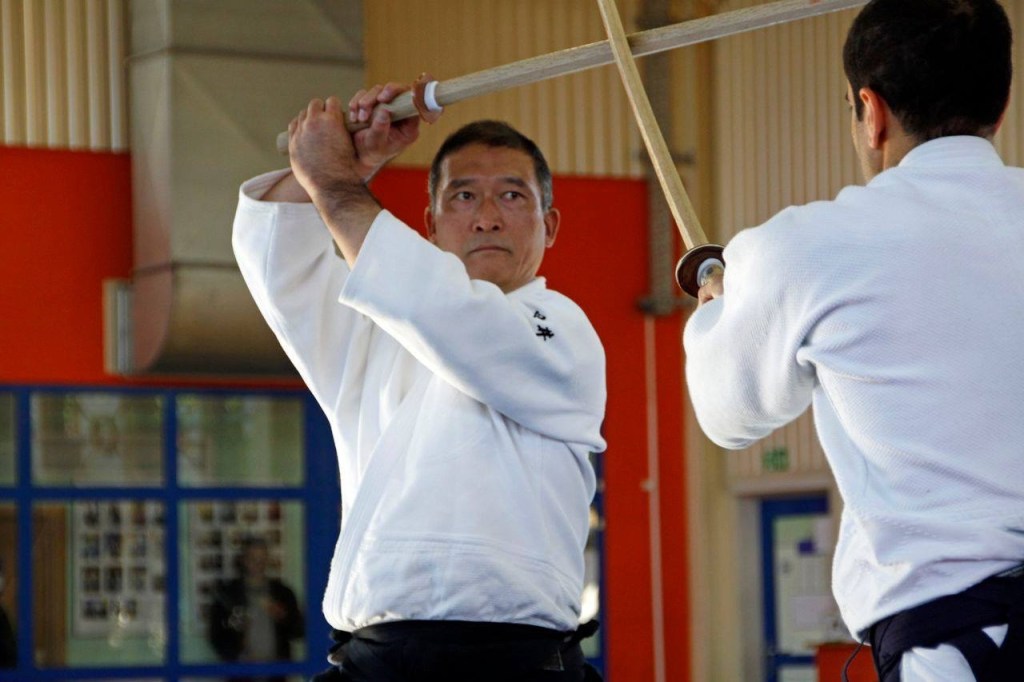
24) With the pandemic, training weapons was a solution. You are known for your work with weapons, but not all instructors and dojos are used to this practice. How do you see the importance of this type of training for Aikido?
Body techniques are the center of Aikido. Weapons are needed to hone body techniques. Same as both wheels of a car. Oh-Sensei showed us both, body and weapons. So we have to think about the relationship between the two.
24)このパンデミックの影響で、武器の稽古がひとつの解決策とされています。先生は武器の方でもご指導される事で知られておりますが、実際先生は合気道と武器の関係性においてどのように思われておりますか・
体術は合気道の中心です。武器の稽古はその体術をよりよく磨くために必要なものと思っています。車の両輪のようなものです。翁先生は、体術と武器の両方を見せておられました。ですので、この二つの関連性を考えなくてはいけません。
24) Com a pandemia, treinar armas foi uma solução. Você é conhecido por seu trabalho com armas, mas nem todos os instrutores e dojo’s estão acostumados com essa prática. Como você vê a importância desse tipo de treinamento para o Aikido?
As técnicas corporais são o centro do Aikido. As armas são necessárias para aprimorar as técnicas corporais. É o mesmo que as duas rodas de um carro. O’Sensei nos mostrou as técnicas corporais e as armas. Portanto, temos que pensar sobre a relação entre os dois.
25) In 1990 you came to Brazil, accompanying Doshu Kisshomaru Ueshiba. What do you remember about this trip?
Oh, you know about it. Did you start Aikido at that time? Between Japan and Brazil, it is the longest trip, over 24 hours by air. And the climate is also the opposite. Osawa sensei and I are Uke for 2nd Doshu. I was very nervous. Taking Uke for Doshu made me always nervous. That would be a good practice for me. I have to know what Doshu wants. That a great Keiko.
25)先生は1990年にブラジルへ来られ、吉祥丸二代目道主とお供されていましたが、何か思い出はございますか?
よくその事知っていましたね。あなたはもうすでに合気道始めていたのですか?日本とブラジル間の旅はとても長く、24時間以上でした。天候も日本と逆です。大澤勇人先生と私で道主の受を取らせて頂きました。道主の受けを取らせて頂くときはいつも緊張していた事を覚えています。でもそれが私にとって最大の修行でありました。道主が何を求められておられるか、それを常に感じながら。これは最高の稽古です。
25) Em 1990 você veio ao Brasil, acompanhando o Doshu Kisshomaru Ueshiba. O que você lembra dessa viagem?
Oh, você sabe sobre isso. Você começou o Aikido naquela época? Entre Japão e Brasil, é a viagem mais longa que existe, com mais de 24 horas de avião. E o clima também é o oposto. Osawa sensei e eu fomos Uke para o 2º Doshu. Eu estava muito nervoso. Tomar Uke como Doshu me deixava sempre nervoso. Isso era uma boa prática para mim. Precisava saber o que o Doshu desejava. Era é um ótimo Keiko.
26) No, I started Aikido only in 1996, but I have seen the videos of the demonstration and classes that Doshu Kisshomaru Ueshiba gave here in Brazil countless times. As an uchi deshi of the Hombu Dojo you were trained by several masters, but I imagine that you see Doshu Kisshomaru as your de facto master. What was he like as a sensei?
Doshu is a master and the center of Aikido in the world. Doshu set an example to others. And Uke must respond to it. That is he very hard training as Physically and mentally.
26)私が合気道を始めたのは1996年でしたので、その時はまだ始めていなかったのですが、吉祥丸道主がブラジルでご指導された時の演武やセミナーを何度もビデオで拝見しました。先生は本部道場の内弟子として、他に多くの先生方の指導も受けられておりますが、やはり吉祥丸道主が先生にとっての、事実上の先生、というところであったのではないかと思いますが、いかがでしょうか?
道主は、世界の合気道の中心であり先生であります。道主が合気道の模範を示されます。そして受けはそれに反応しなくてはいけません。これは肉体的にも精神的にもとても厳しい稽古となります。
26) Não, eu comecei o Aikido apenas em 1996, mas eu vi os vídeos de demonstração e aulas que o Doshu Kisshomaru Ueshiba deu aqui no Brasil inúmeras vezes. Como uchi deshi do Hombu Dojo, você foi treinado por vários mestres, mas imagino que veja o Doshu Kisshomaru como seu mestre de fato. Como ele era como sensei?
Doshu é o mestre e o centro do Aikido no mundo. O Doshu dá o exemplo aos outros. E o Uke deve responder a isso. É um treinamento muito intenso, tanto fisicamente como mentalmente.

27) And today you are one of the main leaders and references of Aikido, what advice would you give to future generations of practitioners?
I hope to adhere to the teachings of the leaders and pass them on to the next generation.
27)先生は、世界中において多くの合気道家が尊敬され、ご指導頂きたい先生方のお一人でございます。何か将来の稽古人に対してアドバイスございますか?
望む事は、指導者にしっかりとした技術を伝えていき、彼らがまた次の世代へしっかりと伝える事です。
27) E hoje você é um dos principais líderes e referências do Aikido, que conselho você daria para as futuras gerações de praticantes?
Eu gostaria de passar as habilidades para os líderes que ensinam Aikido, e espero que eles passem para a próxima geração.

Leonardo Sensei
Sempre nos dando presentes inestimáveis.
Que ótima entrevista e ao mesmo tempo uma aula preciosa.
Domo arigato gozaimashita sensei
CurtirCurtir
Muito obrigado, Celso!! Feliz ano novo, forte abraço!
CurtirCurtir
Ótima entrevista! Achei a pergunta 16 muito adequada. Precisamos refletir sobre essa questão do ukemi.
CurtirCurtir
Sim, o que o Horii sensei falou é muito importante para todos nós refletirmos.
CurtirCurtir
É interessante ver a preocupação de Horii sensei com a didática e a relação entre mestre e aluno.
CurtirCurtir
In the photo before question 7, the “unknown” man in the front row on the right is Shimamoto Tamayuki Sensei 6th Dan. They trained together at Hombu. He is the son of Shimamoto Katsuyuki Sensei 8th Dan from Osaka who Horii Sensei says was his first Aikido teacher.
CurtirCurtir
Thank you very much!!! I didn’t know that, I didn’t know him and I didn’t take care to ask who the people in the photo were for Horii sensei. I will correct this by editing the interview and adding his name to the image. Thank you very much and I’m sorry for my mistake.
CurtirCurtir
Sensei Leonardo, mais uma vez obrigado pela ótima entrevista, onde temos a oportunidade de conhecer mestres importante na arte. Interessante a simplicidade do Sensei Horii, e como com poucas palavras transmite o essencial. Domo arigatou.
CurtirCurtir
Caro Sensei Leonardo, esta entrevista foi um presente para quem admira Sensei Horii.Estive no Japão em 2008, bem no início dos meus treinos , na comemoração de 100 anos de nascimento de O-Sensei.A melhor surpresa foi Sensei Horii misturado aos novatos, humilde e dedicado, até eu treinei com ele.Inesquecível e honroso! Agradeço imensamente a publicação.
CurtirCurtir
Eu que agradeço por ler a entrevista e deixar seu relato. Muito obrigado, espero poder treinarmos juntos também. Abraços!
CurtirCurtir